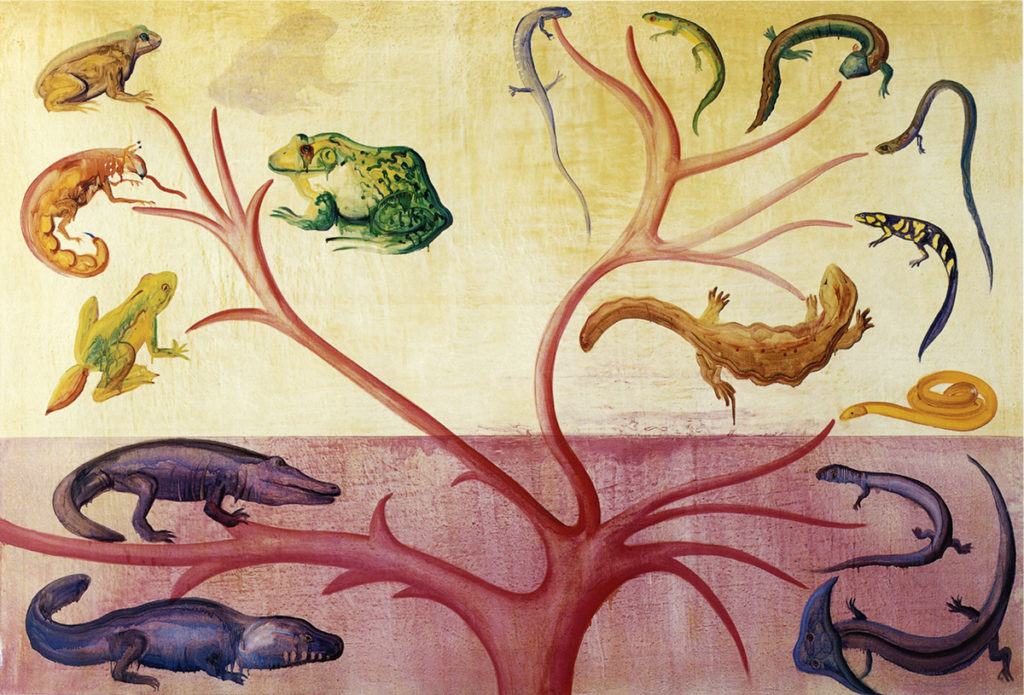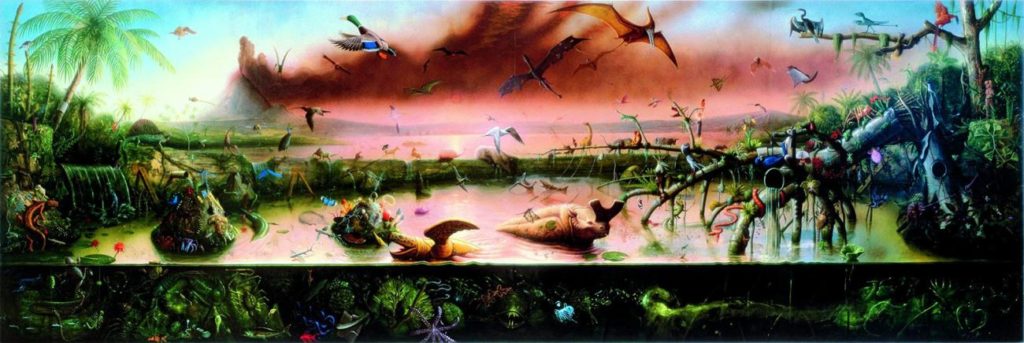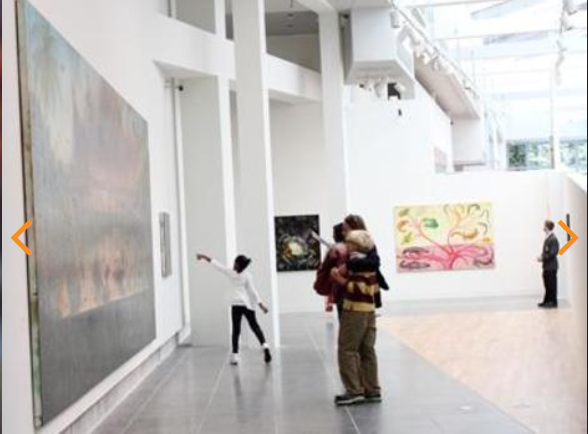
If you visit the website for Experience Columbus and go to the listing for The Wexner Center for the Arts, you will find that gallery B makes an appearance. However, now in 2020 you will be transported to the gallery as it looked back in 2011 with the above photograph of the exhibition Alexis Rockman: A Fable for Tomorrow. The title of the exhibition – and its themes of human-induced ecological disaster – is shared with the opening chapter Rachel Carson’s 1962 book Silent Spring.
You can hear more about the exhibition from its curator, Bill Horrigan in the gallery guide and video below.
For now, I just want to stay with the Experience Columbus photograph of gallery B and offer you images of the three works that I have been able to identify. At the back, to the right, you can see the 1986 work Amphibian Evolution and to its left the 1997 work Airport.

To the left of the photograph, the largest work in view is Rockman’s iconic 1992 work Evolution.

In a review for the exhibition for the Wall Street Journal, Sidney Lawrence comments on the works in gallery B, and specifically Evolution, culminating with an urgent question.
To return to the photo on the Experience Columbus website, the one work I am unable to identity in the gallery is the one that the girl dressed in white is so animatedly point to.

Perhaps that painting holds the key to the urgent question of our time and she was trying to warn us!
